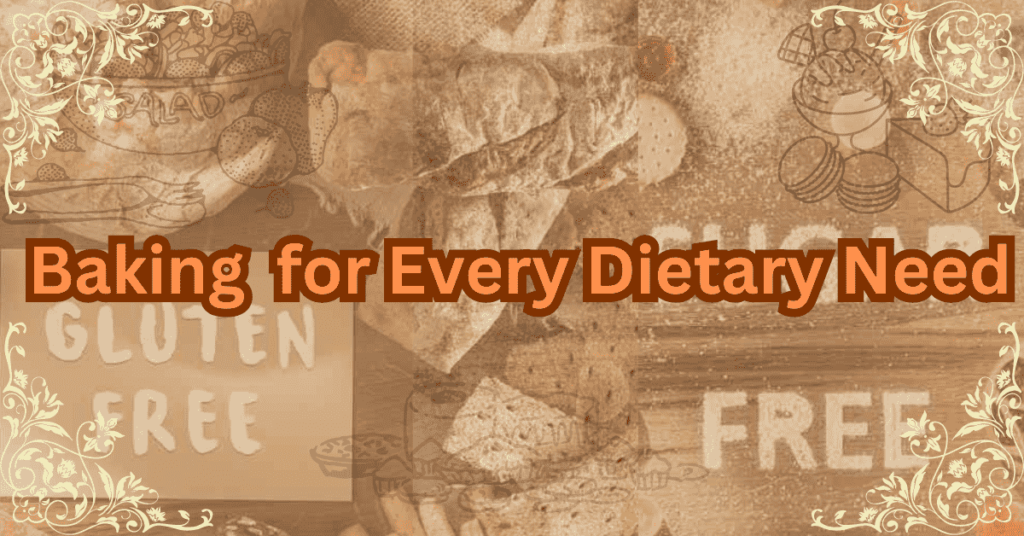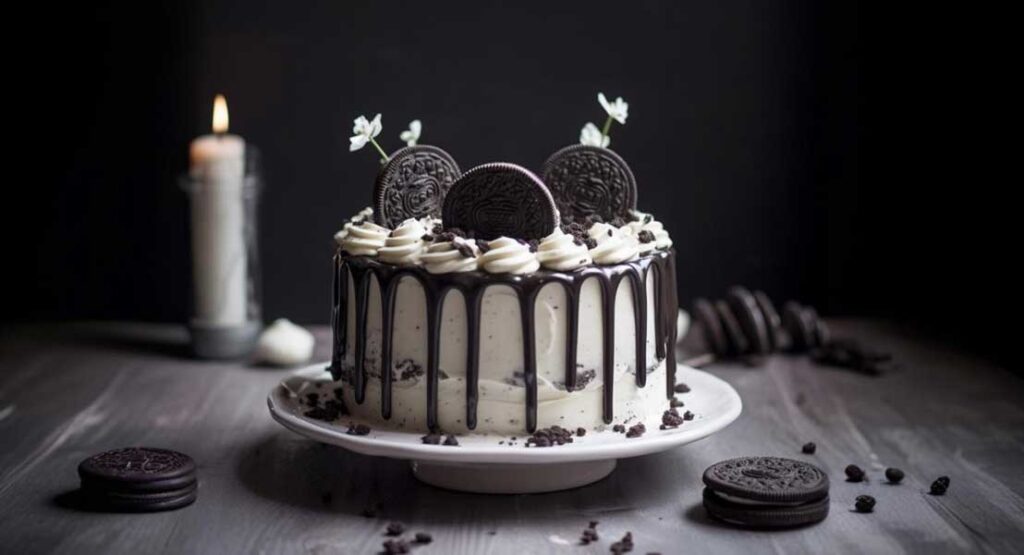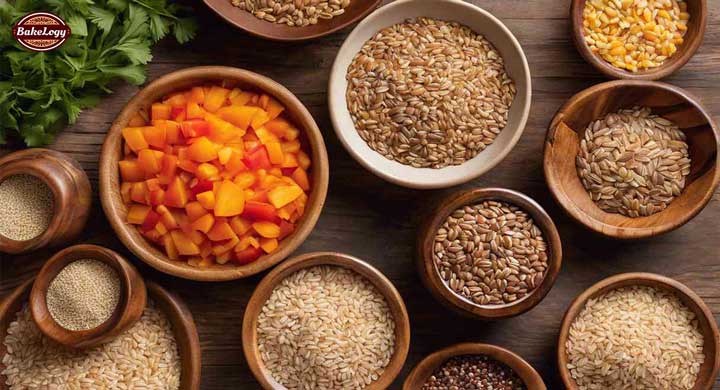Craving a sweet treat but restricted by a special diet? Fear not, fellow foodie! Baking for dietary needs isn’t just possible, it’s a delicious adventure. Whether you’re gluten-free, vegan, or following a specific lifestyle plan, you can still whip up amazing baked goods that everyone will love.
Calling all bakers with dietary restrictions, or those one who love them! Feeling left out of the cookie club or missing out on muffin magic? Those days are over! Dive into the delightful world of baking for every need. From gluten-free to vegan and everything in between, this guide is your roadmap to creating delicious, satisfying baked goods that everyone can enjoy.
This guide equips you with the knowledge and substitutions to become a baking ninja for any dietary restriction.
Understanding Your Battlefield: Common Dietary Needs
- Gluten-Free: For those with celiac disease or gluten sensitivity, wheat flour is a no-go. But fret not! Almond flour, coconut flour, and oat flour (check for gluten-free certification) are fantastic alternatives.
- Dairy-Free: Lactose intolerance or vegan lifestyle? No problem! Swap dairy milk for plant-based options like almond milk, soy milk, or coconut milk. Use vegan butter or coconut oil for a dairy-free fat source.
- Sugar-Conscious: Looking to keep things a little lighter? Experiment with natural sweeteners like applesauce, mashed banana, or dates. You can even reduce the sugar content in most recipes by 25% without sacrificing taste.
- Egg-Free: Egg allergies or vegan lifestyle? Chia seeds or flaxseed mixed with water can act as a great egg substitute in many recipes.

Conquering the Kitchen: Essential Tips and Tricks
- Embrace Alternative Flours: Don’t be afraid to experiment with different flours and blends. Each offers unique textures and flavors.
- Befriend Binders: When subbing out gluten, flours like almond flour lack the binding power of wheat. Xanthan gum or psyllium husk can be your secret weapons for achieving the perfect texture.
- Sweet Alternatives: Natural sweeteners may add a touch of moisture or a subtle fruitiness to your baked goods. Explore and have fun!
- Mind the Measurements: While some substitutions are straightforward, others may require adjustments. Start with trusted recipes designed for your specific dietary needs.
Beyond the Substitutions: Baking for Everyone
- Label Clearly: When sharing your baked goods, always label them clearly to avoid any confusion or allergic reactions.
- Double the Batch: Why not whip up a double batch? Bake one version with your substitutions and enjoy the other following the original recipe.
- Get Creative: Think outside the box! Explore naturally gluten-free options like nut butter cookies or vegan desserts made with fruits and avocado.

Delicious Recipe Ideas for Every Diet:
Gluten-Free and Vegan Double Chocolate Chip Cookies:
These cookies are a dream come true for those avoiding gluten and dairy! Almond flour and flaxseed meal create a chewy texture, while vegan chocolate chips and cocoa powder deliver a rich, decadent flavor.
Sugar-Conscious Zucchini Bread:
This twist on classic zucchini bread uses applesauce for natural sweetness and keeps the added sugar to a minimum. The zucchini adds moisture and keeps the bread incredibly light. Perfect for a guilt-free breakfast or afternoon snack.
Dairy-Free and Paleo Carrot Cake with Cashew Icing:
This recipe takes carrot cake to a whole new level! Paleo-friendly almond flour and coconut flour create a moist crumb, while grated carrots and warming spices deliver a delightful flavor. Top it off with a creamy cashew icing made with soaked cashews, maple syrup, and a touch of lemon juice for a truly irresistible treat.
Egg-Free and Vegan Banana Oatmeal Muffins:
These muffins are packed with wholesome goodness! Mashed bananas add natural sweetness and moisture, while rolled oats provide a satisfying fiber content. Chia seeds act as an egg substitute, keeping these muffins fluffy and delicious.
These are just a few ideas to get you started! Remember, there are endless possibilities when it comes to baking for different dietary needs. Don’t be afraid to experiment with different ingredients and flavors to create your own signature treats.
Classic Gluten-Free Brownies:
Missing those fudgy brownies? Look no further! This recipe uses a blend of almond flour and oat flour (certified gluten-free) to achieve a delightful texture. Cocoa powder and melted chocolate ensure a rich, decadent flavor that everyone will love.
Vegan and Nut-Free Pumpkin Spice Muffins:
These muffins are perfect for cozy fall mornings. They’re made with sunflower seed flour, a great alternative for those with nut allergies. Pumpkin puree adds moisture and a touch of sweetness, while warming spices like cinnamon, nutmeg, and ginger create a delightful seasonal flavor.
Sugar-Conscious and Paleo Peanut Butter Cookies:
These cookies are a healthier take on a classic treat. Made with almond flour, natural peanut butter, and a touch of maple syrup for sweetness, they’re packed with protein and healthy fats. They’re also grain-free and paleo-friendly, making them a great option for those following specific dietary plans.
Dairy-Free and Egg-Free Chocolate Chip Pancakes:
Pancakes are a weekend staple, but what if you have dairy or egg allergies? This recipe uses oat milk and a flaxseed egg substitute to create fluffy, delicious pancakes everyone can enjoy. Top them off with your favorite dairy-free toppings like vegan butter, maple syrup, or fresh fruit.
Ready, Set, Bake!
With a little planning and these handy tips, you can transform your kitchen into a haven for delicious, inclusive treats. So, preheat your oven, grab your favorite mixing bowl, and get ready to bake up a storm – dietary restrictions or not!




